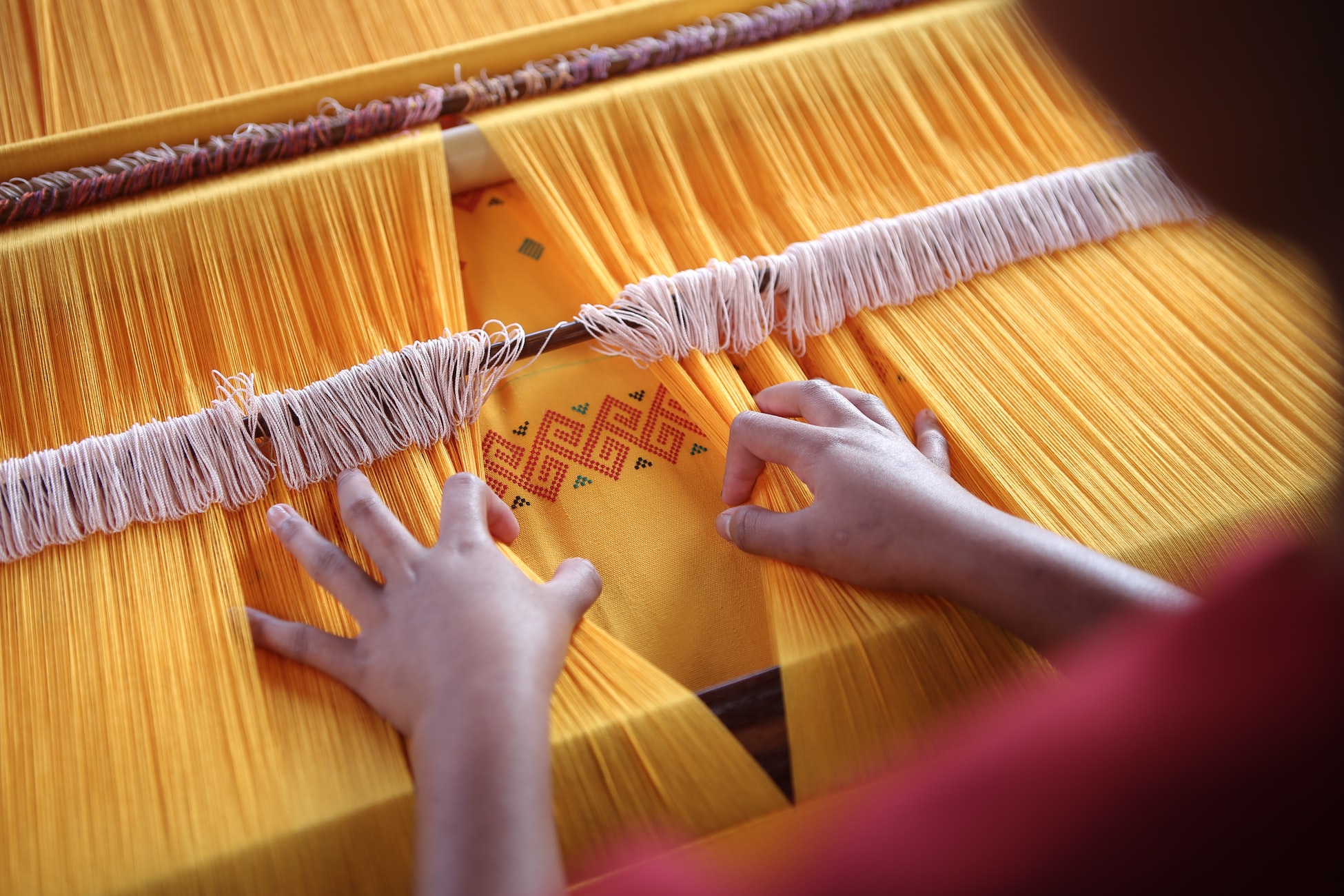Both of the processes are used in the textile supply chain. The very first process of this supply chain is the spinning process. The yarns produced by spinning are used to produce a fabric that is further used to make clothing. So, don’t get confused with these two processes. Find out more in the reply to this question What Are the Differences between Spinning and Weaving?
What is Weaving?
The oldest and most widely used technique to make a fabric is weaving.
Weaving is nothing but the interlacement of two sets of threads that are known as warp and weft threads. Warp threads run in a vertical direction along with the length of the fabric whereas across the width of the fabric, the weft threads run.
Looms are used to form a fabric sheet from the yarns. Rigid heddle loom, table loom, floor or toddler loom, dobby loom, counterbalance loom, computerized loom, and jacquard looms are available to produce fabrics.

In the conventional system, handloom is used to yield fabric. But now computer-aided systems play an important role in weaving and design. Now APSO, AVL and Scotweave software are used in the automated machines.
Just by imputing some basic draft information, this software is able to produce weave structures, face fabric simulations and even different color combinations are also possible. More accurate design drafting, speedier changes in design and fewer errors are now easily achievable due to the advancement in weaving machines.
Also Read: Difference Between Weaving and Knitting
What is Spinning?
Spinning is a process where fibers are bound by twisting together to impart strength or molten polymer is extruded by spinneret to provide yarns.
Yarn is a linear collection of filaments or fibers bounded or twisted together. They possess good tensile strength and they have also good quality elastic properties. Different types of spinning are carried out. Conventional spinning, open end spinning like a vortex, rotor, friction spinning.
Again we can produce synthetic filament yarns by dry spinning, wet spinning, and melt spinning processes. Gel spinning is a special process which is known as dry-jet-wet spinning. This technique is used to make very strong fibers with special characteristics.
Here a partially liquid or gel state polymer is used to keep the polymer chain bound together. This process is used to produce high strength polyethelyne and aramid fibers.
Types of Spinning
Acrylic, modacrylic, spandex, rayon or aramid etc filaments are produced by this oldest type of spinning, wet spinning technique.
In dry spinning, polymers are dissolved in the solvent and pumped through the spinneret. Then the evaporation of the solvent solidifies and the filament is obtained.
The fibers that can’t be produced through melt spinning for any environmental safety purpose, the dry spinning technique is used for them. Acetate, triacetate, acrylic, modacrylic, spandex, PBI and vinyon etc can be spun through the dry spinning technique.

In the melt spinning system, the polymer is melted and passes through the spinneret. When cooled that gets solidified and collected by taking up the wheel.
Polyethelyne terepthelet, Nylon, olefin, saran fiber etc are produced by the melt spinning technique. Polyester and Nylon 6 are produced in a high volume with this technique.
Depending upon the spinneret head, filaments may have different shapes like circular, trilobal, pentagonal, octagonal etc. Trilobal form gives the fabric a sparkling shine as it can reflect more light.
Pentagonal and hollow fibers are used in carpets and different types of rugs like dining table rugs, and bathroom rugs because they are dirt and soil resistant. Glitter free effects are offered by octagonal shaped filament yarns.
What Are The Differences Between Spinning and Weaving?
| Spinning | Weaving |
| Spinning is a process of twisting fibers and in turn producing yarn | Weaving is a process where two sets of yarns are interlaced in a crosswise pattern to create a continuous length of fabric |
| Spinning is often carried out in natural fibers like wool, silk, cotton etc. But synthetic yarns are also produced by different spinning systems like wet spinning, melt spinning or dry spinning methods. | Both natural and synthetic yarns are used to produce fabric |
| Traveler is used in ring spinning | No use of traveler |
| The twist is inserted into the fibers to bind them together | The vertical yarns are called warp yarn and horizontal sets of yarns are called weft yarn |
| In ancient times spinning wheel was used to produce yarn. But now modern machines are used. | In ancient times handloom is used to make fabric but they are now replaced by automated machines |
| No sizing is required | During weaving, sizing is done at warp yarns |
The Last Word
Spinning is the first process where the yarns are made by the insertion of twists in fibers. Then the yarns are used to weave fabrics that finally, are used in making apparel or garments.

